The four key parameters in stock optimization

Four parameters rule all good stock optimization approaches: Service Level, Safety Stock, Order Frequency, and Training Period. In this blog post, we will define each term and show how they are interrelated, as well as provide insight on why getting this right can turn inventory management from a problem into a strategic asset.
- Service level: Setting the standard of reliability
Your service level is the likelihood that an item will be in stock when required. You can think of this as the service level’s commitment to the business: “We’ll have what you need, when you need it, this percentage of the time.”
The higher the service level (98–99%), the lower the risk of a stockout. However, this also results in higher holding costs as more stock needs to be available. A lower service level (90–95%) cuts carrying costs but increases the risk of shortages.
Desired service level will vary based on criticality of item. You can probably get away with a slightly lower service level for consumable items such as gloves, fasteners, etc. However, if a high-impact tool or part can stop production, you may be better off spending a little more to get as close to 100% availability as possible.
With CRIBWISE: Service levels are automatically calculated and monitored for each stock item so you can easily see if you’re hitting your performance targets.
- Safety stock: Your insurance policy
Even with the best planning, you will still experience variations in demand and supplier lead times. For this reason, safety stock is held as an additional buffer stock.
If safety stock is too low, the consequences will be stockouts if demand unexpectedly increases or if a delivery is late. If safety stock levels are too high, more money is tied up and, especially for goods with a limited shelf life, the risk of obsolescence will increase.
Safety stock is affected by both demand variability and supply variability. For example: if a supplier’s lead time is highly variable, from 5 to 15 days for example, the safety stock compensates for this.
With CRIBWISE: Our tool management software determines the optimal level of safety stock for each item, according to historic consumption and supplier performance.
- Order frequency: Balancing efficiency and responsiveness
How often should you reorder? It’s the question at the heart of order frequency. Ordering small amounts often keeps inventory lean and nimble but may result in frequent ordering and administrative costs.
Ordering large quantities infrequently minimizes order processing costs but may lead to bloated stock that lingers in storage. The optimal frequency depends on the costs of placing an order, how long the lead time is and how much storage space you have available.
With CRIBWISE: The platform suggests the optimal frequency for replenishment by calculating your usage patterns and lead times. Avoid the twin evils of excess stock and last-minute emergencies.
- Training period: Teaching the system to think smart
The first three parameters are associated with the day-to-day operations while the training period is about longer term intelligence.
If a stock optimization system is newly installed, it requires a training period to “learn” the usage patterns. During this time, the algorithms need to acquire enough information on demand variability, supplier performance and consumption trends to provide correct recommendations.
Consider it like onboarding a new employee – the more they are exposed to the “real world” conditions, the more intelligent they become.
With CRIBWISE: the software “learns” during its training period to become familiar with your unique environment. Within weeks, the platform will start generating useful recommendations that will become more precise as time goes by, and more data is recorded.
Bringing it all together
Each parameter has an independent leverage point; however, the real strength of stock optimization emerges from the interaction of these different factors.
- The higher the service level, the more safety stock you’ll need.
- Changing your order frequency will impact your safety stock requirements.
- An optimized training period guarantees that all other parameters are founded on data, not assumptions.
Optimizing one without the others can cause imbalances. The objective is synergy – optimizing all four so that each supports the others.
Stock optimization is much more than just a technical exercise, it has real business impact on cash flow, productivity, customer satisfaction and more. It helps you reduce waste, avoid costly downtime and free up working capital for growth and expansion.
When you focus on the four key parameters of Service Level, Safety Stock, Order Frequency and Training Periods, you are minimizing stock without impacting availability.
With CRIBWISE, stock optimization is simple. Our platform enables you to not only track these four important parameters but also to automate stock-related processes – so you can have the right items, available at the right time in the right quantities.
Are you ready to gain ultimate control of your inventory?
Stop losing money due to bad stock management. CRIBWISE stock optimization can help you save money, reduce downtime, and stay running at 100% efficiency everywhere.
Schedule a CRIBWISE demo today and discover how intelligent stock optimization can revolutionize your business.


